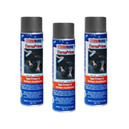What are Adhesion Promoters?
- 28 April 2017
- Posted by: Madhuraka
- Category: Article
 A colourful analogy would describe an adhesion promoter as a stickiness bridge, but this analogy lacks depth. Instead, we’ll outline the chemical coupling features of this essential fixative agent and learn how this additive works with both the targeted substrate and an adhesive compound to produce (promote) a strong bond. Capable of facilitating a chemically active adherence effect on traditionally bond-uncooperative substrates, adhesion promoters are an important part of any chemical bonding toolkit.
A colourful analogy would describe an adhesion promoter as a stickiness bridge, but this analogy lacks depth. Instead, we’ll outline the chemical coupling features of this essential fixative agent and learn how this additive works with both the targeted substrate and an adhesive compound to produce (promote) a strong bond. Capable of facilitating a chemically active adherence effect on traditionally bond-uncooperative substrates, adhesion promoters are an important part of any chemical bonding toolkit.
What Are Adhesion Promoters?
Principally, this coupling agent improves the affinity one substrate has for another during the adhesion process. It also augments the chemical fastening action if the compound isn’t fully compatible with a particular substrate. Basically, this product additive levels the playing field. It makes a strong and reliable compound join possible when obstructive substrates participate in the bonding process.
The Chemical Equalizers of the Adhesive World
This bonding asset is found in aerosol form. It’s also sold as a sponge, which is a handheld form that’s intended to prime joining surfaces. There’s also adhesion promoters blended into formulated products, so bond integrity is actioned as soon as the compound is applied. Once applied to the surface, either as a blended liquid or as a primer, the coupling enhancer reacts with the substrate to maximise fastening power and eliminate any dissimilarity factors.
Exhibits Compatibilising and Copolymerisation Talens
These are two intimidating words. They’re long and loaded with syllables. However, they’re easy enough to explain in simple terms. A polymerization issue simply refers to a facility for plastics blending. It just means a plastic substrate and the plasticisers in a formulated adhesive will react properly and couple. Again, it’s the job of the adhesion promoter to bridge any incompatibility issues. Speaking of incompatibility problems, the same formulated coupling agent is responsible for “tying” the different layers or laminates together when a meeting of two or more bond-disparate substances meet during the application stage, for without a proper chemical affinity interface, there can be no bonding reaction. Then, without this core reactive force, there can be no curing.
Like a reactive bridge, adhesion promoters prepare and prime a surface for the application of the bonding compound. In this spray or sponge form, it’s a primer. Conversely, the coupling additive is often infused into the product as a blending agent, a reactive formula that enhances the fixative power of the glue. It also facilitates the adhesive process and curing stage when uncooperative substrates are involved in the material coupling process.

